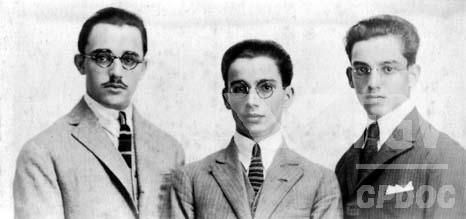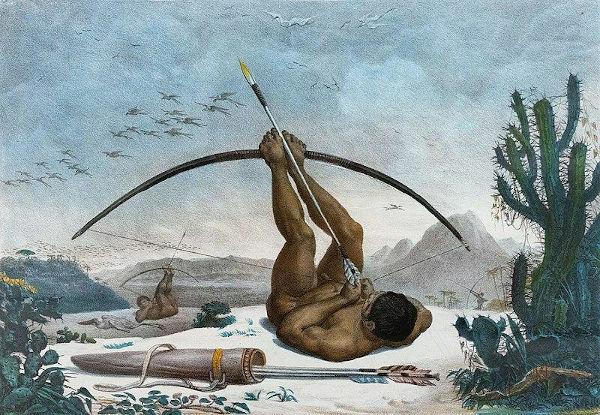Anísio Teixeira he was an important Brazilian educator of the 20th century who defended free, secular public education. He believed that education should be everyone's right and worked, for a large part of his life, developing projects in the public administration of education. He died a mysterious death in March 1971.
Accessalso: Marshal Rondon, one of the great indigenists of our country
Summary about Anísio Teixeira
Anísio Teixeira was born in Caitité, Bahia, in 1900.
He started working with education in the 1920s when he was invited to a public position in the government of Bahia.
He was one of the subscribers to the Manifesto of the Pioneers of Educação Nova.
He was an advocate of a free, secular public school that could provide opportunities for everyone.
He died, in mysterious conditions, in March 1971.
Youth of Anísio Teixeira
Anísio Spínola Teixeira was born in the city of Caetité, in the state of Bahia,on July 12, 1900. He came from a family influential in local politics in Caetité, as his father, in addition to being a doctor, was a political leader. So he belonged to a family that enjoyed a good financial condition.
his father was called deocletianSaucerTeixeira and his mother, AnnaspinolaTeixeira. His educational background was of good quality, and he studied at two Jesuit colleges. The first of them was the Instituto São Luiz Gonzaga, in Caetité, and the second was the Colégio Antônio Vieira, in Salvador.
In his youth, Anísio Teixeira considered following the ecclesiastical life due to the influence of the Jesuits, but his father didn't allow it because he wanted his son to follow in politics. So Anísio Teixeira continued his schooling, enrolling in the law School in Rio de Janeiro. Graduated in 1922.
Anísio Teixeira's professional life

In 1924, Anísio Teixeira began his professional career and entered the public service when he was invited by the governor of Bahia, Francisco Marques de Góes Calmon, for the position of iinspector-ggeneral of andschool. Anísio Teixeira was in charge of this function from 1924 to 1928 and was able to carry out some reforms in the school system in Bahia.
As part of his work, Anísio Teixeira performed a series of trips to the United States and The Europe, and on these trips he studied, via observation, the educational models existing in the two locations. The trips, therefore, served as a basis for him to exercise his functions in Bahia.
However, he did not continue in this role for much longer, as, in 1928, he resigned for not agreeing with the proposals for the education of Vital Henrique Batista Soares, the new governor of Bahia. After that, Anísio Teixeira went to the United States to begin his postgraduate studies.
In the United States, he studied at Teachers College, part of Columbia University, obtaining the title of Master of Arts, which corresponds to a master's degree in humanities. During this period, he met JohnDewey, an educator who was a great influence on him.
After he left public office in Bahia, he took up a position as a professor at the Escola Normal in Salvador and tried to be elected federal deputy, but failed. From 1931 onwards, he moved to Rio de Janeiro, and there he assumed the directorship Federal District Public Instruction. His work in Rio de Janeiro had national repercussions.
According to researcher Clarice Nunes|1|, Anísio Teixeira carried out a reform in primary, secondary and adult education, in addition to creating a municipal university called Federal District University, in 1935. Anísio Teixeira is considered the creator of this new university, which ended up being closed a few years later, in 1939.
In the 1930s, Anísio projected himself as one of the greatest educators in Brazil and was part of the Manifesto of the Pioneers of New Education. This document, formulated in 1932, proposed a reformulation of education in Brazil and stipulated the construction of a public and secular school that did not allow access to education to be seen as a privilege, but as a right of every Brazilian citizen.
The proposal of the manifesto, and in which Anísio believed, defended a school that surpassed the traditional teaching and that was responsible for educating and training free men, who would participate in the process of building a more just and equality. Anísio Teixeira believed that this public school with critical and reflective education was crucial for the consolidation of democracy in Brazil.
The turbulent political environment that the country began to experience in the second half of the 1930s affected Anísio Teixeira's life. Your proximity and collaboration with the National Liberating Alliance, the ANL, caused him to be persecuted by the authoritarianism of the Vargas government. He was accused of getting involved with the Communist Intention of 1935 and for that reason he was removed from his public office.
The authoritarian environment of Brazilian politics made Anísio Teixeira distance himself from education and public life. During the entire period of the new state, he dedicated himself to private work, dealing with mineral exploration, car sales and book translation.
Accessalso: Pagu, one of the great Brazilian artists of the 20th century
Acting in the democratic period
The deposition of Vargas, in 1945, represented the construction of the first democratic experience in Brazil. From that period (known Fourth Republic, Third Republic or Republic of 1946), Anísio Teixeira resumed his work in the educational field. His influence in this area made him transform into advisergivesUNESCO (UN body dedicated to education) in 1946.
In 1947, Anísio Teixeira was invited by the then governor of Bahia, Otávio Mangabeira, to work at the head of the Secretary of Education of State. In this public position, he was responsible for important educational projects, such as Escola-Parque, where he was provided the student with food, hygiene, in addition to studies to train him as a citizen and to prepare him for the market of Work|1|. This project developed by Anísio Teixeira corresponds to what we currently know as teachingintegral.
Anísio Teixeira became, in the 1950s, one of the greatest educators in Brazil and served as the head of two important education bodies in the country: the Capes, Higher Education Personal Improvement Campaign, and the inep, National Institute of Pedagogical Studies. During this period, he played a crucial role in the formulation of the first Law guidelines and bases of national education, one of the most important documents governing Brazilian education.
In 1961, he was one of the creators of the UniversityinBrasilia, the UnB, being Dean from June 1963 to April 1964. He was removed from the rectory soon in beginning of the Military Dictatorship. In the authoritarian period, he was still compulsorily retired from public service.
Anísio Teixeira's last years
With the beginning of Military dictatorship, Anísio Teixeira went into exile from the country, moving to the United States, where he taught at several North American universities. He returned to Brazil in 1966, working at the Getúlio Vargas Foundation (FGV), and applied to the Academia Brasileira de Letras in the early 1970s.
On March 11, 1971, Anísio Teixeira died, and his death is still considered todaymysterious. On that day he gave a lecture at FGV, and then went to the direction of Aurélio Buarque de Holanda's house to ask for his vote to be accepted in the Brazilian Academy of Letters.
However, Anísio Teixeira never appeared at the lexicographer's house, and was found, two days later, dead. The official version tells that he suffered a accidentinelevator, this being the reason for his death. However, further investigations conducted by the CommissionNationalgivesTruth, identified that Anísio Teixeira would have been victim of the Military Dictatorship.
Witnesses claimed that he was allegedly arrested and taken to the Air Force, where he was interrogated. The investigations carried out by the Truth Commission never reached conclusive answers, but it is likely that Anísio Texeira was killed by the dictatorship in a sessionintorture and that his body has been deposited in an elevator moat.
Grades
|1| NUNES, Clarice. Anísio Teixeira among us: the defense of education as a right for all. To access, click on here.
Image credit
[1] FGV/CPDOC
by Daniel Neves
History teacher
Source: Brazil School - https://brasilescola.uol.com.br/historiab/anisio-teixeira.htm

